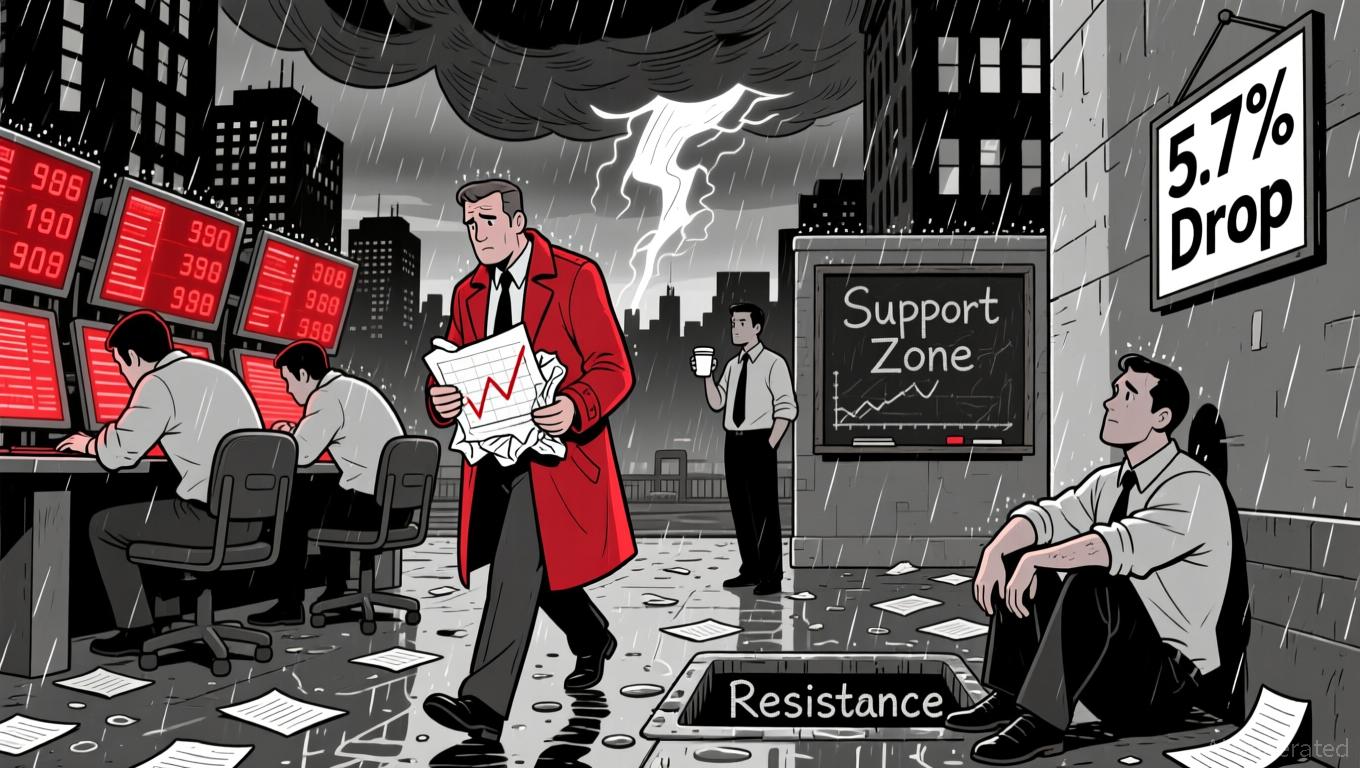Hyperliquid News Today: Goldman: AI's $19 Trillion Buzz Surpasses Actual Progress, Bubble Concerns Rise
- Goldman Sachs warns U.S. stock markets have overvalued AI's economic potential, pricing $19T gains ahead of actual productivity impacts. - The bank identifies "aggregation" and "extrapolation" fallacies as key risks, mirroring historical tech bubbles from 1920s/1990s over-optimism. - AI expansion extends beyond tech sectors, with blockchain compliance tools and energy management markets projected to grow via AI integration. - Regulatory challenges persist as DeFi collapses expose gaps in AI token definit
According to Goldman Sachs, the U.S. stock market has already factored in nearly all the anticipated economic advantages of artificial intelligence, with $19 trillion in market capitalization growth outpacing the actual macroeconomic effects of AI. The investment bank’s findings, released in a report from November 2025,
The report projects that the net present value of AI-driven capital income for the U.S. could fall between $5 trillion and $19 trillion, with a central estimate of $8 trillion. Yet, since ChatGPT’s debut in 2022, companies tied to AI have seen their market worth soar by more than $19 trillion, a surge that includes semiconductor manufacturers, major cloud providers, and private AI developers.
The bank identifies two main risks: the “fallacy of aggregation,” where investors may wrongly assume that individual company successes can be scaled across the entire sector, and the “fallacy of extrapolation,” where short-term gains are mistakenly expected to last indefinitely.

Regulatory barriers continue to pose significant obstacles. The 2025 collapse of the COAI token revealed weaknesses in decentralized finance, especially in developing markets with inconsistent oversight. This event highlighted the urgent need for clearer definitions of AI tokens and stablecoins under U.S. regulations,
Goldman’s research also corresponds with larger industry changes. For example, the worldwide energy management systems sector is expected to reach $219.3 billion by 2034, propelled by AI-powered efficiency tools and smart grid technologies.
For those investing, the report highlights a delicate equilibrium. While AI could increase U.S. productivity by 15% over the next ten years, the disconnect between market enthusiasm and real economic results may grow.
Disclaimer: The content of this article solely reflects the author's opinion and does not represent the platform in any capacity. This article is not intended to serve as a reference for making investment decisions.
You may also like
Trump’s Federal Reserve Shakeup Raises Concerns Over Stagflation and Divides Within GOP
- Trump announced his Fed chair pick but withheld the name, criticizing resistance to removing Powell before his 2026 term ends. - Shortlisted candidates include Waller, Bowman, and Rieder, with Trump hinting at a "standard" choice amid political tensions. - The dispute with Rep. Greene over Epstein files highlights GOP fractures, as Trump accused her of betraying party loyalty. - Critics warn politicizing the Fed risks stagflation, while the Epstein files debate underscores transparency vs. loyalty tensio

Nebraska and Wyoming: The Competition for Leadership in Crypto Banking Intensifies
- Nebraska grants first digital asset bank charter to Telcoin, sparking territorial dispute with Wyoming, a crypto banking pioneer since 2017. - 43-day government shutdown disrupted 680,000 Maryland SNAP recipients and caused 5M travel disruptions due to air traffic controller shortages. - Trump's $82M bond purchases and military strikes on drug-smuggling vessels face conflict-of-interest concerns and international backlash. - Fed credibility questioned after ex-governor Adriana Kugler resigns over illegal

YFI Drops 5.76% Over the Past Week as Overall Market Shows Weakness
- YFI fell 5.76% in 7 days and 44% annually, reflecting broader market weakness and risk-off sentiment. - Analysts link declines to macroeconomic uncertainty, profit-taking, and shifting investor psychology despite no direct catalysts. - Mixed sector updates (Eltek, iQIYI , Zymeworks) highlight varied asset-class responses to current economic conditions. - YFI remains a key digital asset indicator, with stabilization signals closely monitored amid ongoing downward pressure.

Bitcoin’s Abrupt Decline: Should Investors See This as a Chance to Buy or a Cautionary Signal?
- U.S. regulatory changes (GENIUS Act) shifted focus to stablecoins, boosting altcoins while Bitcoin lagged with a 6% price rise. - Institutional investors withdrew $2.9B from crypto ETFs in Q3 2025, exacerbating Bitcoin's decline below $90,000 amid high interest rates. - On-chain data shows extreme fear (index at 10) and whale activity, suggesting a mid-cycle correction rather than a prolonged bear market. - Macroeconomic factors, including AI-driven capital shifts and high yields on traditional assets, f